What Hi-Fi? Verdict
With super-bright content, the A95L will knock your socks off; with everything else, it's merely superb – and it sounds great for a TV, too
Pros
- +
Stunning brightness, contrast and colours
- +
But even-handed and authentic, too
- +
Crisp, direct and spacious sound
Cons
- -
Still only two HDMI 2.1 sockets
- -
Some gaming features coming later
- -
No UK catch-up apps
Why you can trust What Hi-Fi?
Very few TVs have been trailed as heavily as the Sony A95L. Revealed and demoed way back in March, then made available to us for an afternoon of testing at Sony's UK HQ in August, it's taken until now for the A95L to make it into shops and into our test room.
It's not as if Sony really needed to try that hard to build excitement, either: the A95L is the successor to the A95K, arguably the best TV of last year if you don't take price into account. One of the two first QD-OLED TVs launched, it trumped its Samsung S95B rival by deploying its brightness-boosting, vibrancy-adding Quantum Dots in a more considered and authentic fashion – and by offering a far superior sound system to boot.
The promise of second-generation QD-OLED panels is an even brighter and more efficient performance, but we were just as excited to find out how the team at Sony could refine the performance further with an extra year of experience with the new panel technology.
Our time with the TV pre-launch suggested that Sony might have produced something seriously special with the A95L, but no hands-on session – even one of a few hours – can tell the whole story.
Having now spent over a week testing it in our own facilities, with our own sources and equipment and against a raft of rivals, we can safely say that yes, the Sony A95L is a very special TV indeed.
Price
As you might expect, the Sony A95L is a very expensive TV, coming in at £3699 / $3500 / AU$5995. What is surprising – and disappointing for UK buyers – is that this is much lower than the launch price of the A95K in the US but significantly higher in the UK (pricing is flat in Australia, where only the 65-inch version of the A95K was made available).
You can see the full comparison in the table below.
| Size | Sony A95K (2022) | Sony A95L (2023) |
|---|---|---|
| 55 | £2699 / $3000 / AU$n/a | £2999 / $2800 / AU$5295 |
| 65 | £3499 / $4000 / AU$5995 | £3699 / $3500 / AU$5995 |
| 77 | No such model | £5999 / $5000 / AU$9495 |
Of course, what matters more than how much the A95L costs compared with its predecessor, is how much it costs against current rivals, and it's bad news here: the A95L is priced significantly higher than the LG G3 and Samsung S95C – and that's before you take into account the significant discounts that are regularly being offered on those models, which have now been available for a few months.
Will the A95L come down in price? Almost certainly, but Sony doesn't go nearly as aggressive on discounting as its South Korean rivals, so it seems unlikely that you'll ever be able to buy the A95L for less than the equivalent G3 or S95C, even around sales events such as Black Friday.
Design
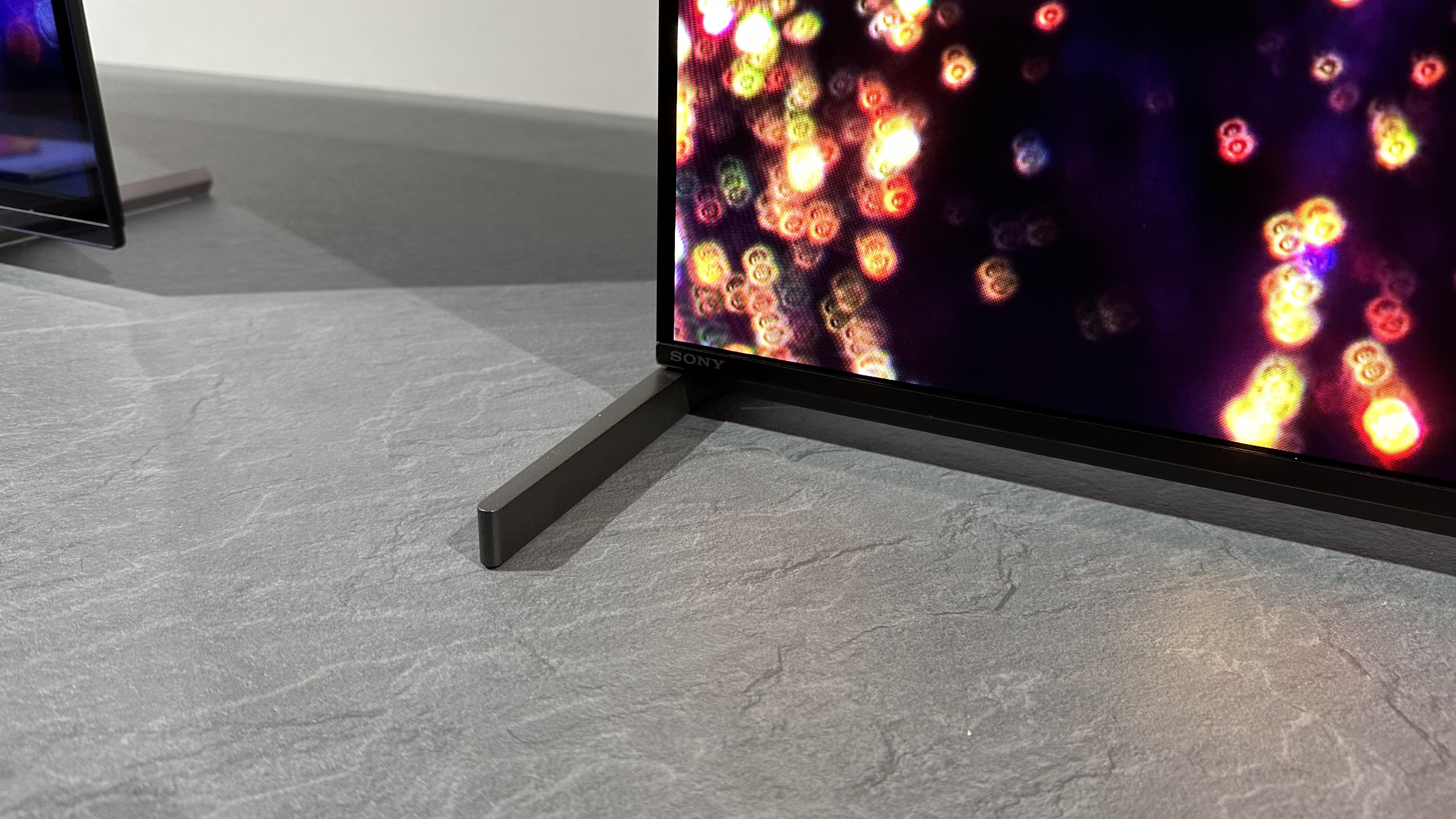
Last year’s A95K is a great-looking TV, mostly because of its innovative stand, which can be placed in front of the TV so that it can sit flush against a wall, or behind it so that you can’t see it at all from the front. The problem with the stand is that it’s extremely heavy, which makes set-up a pain and can’t be good for shipping, either from a cost to Sony or an ecological point of view.
It’s perhaps not surprising, then, that Sony has opted for a simpler design consisting of two aluminium feet for the A95L. These feet sit at the extremes of the bottom edge of the TV. Sony says this has been done so that they don't create reflections on the screen, but this also gives the set an extremely wide footprint, which means you need an equally wide piece of furniture – at least 145cm / 57 inches in the case of the 65-inch model we're testing.
The 77-inch model includes the option of having the feet installed more centrally so that the TV can have a narrower footprint, and we wish the 55- and 65-inch models did too (Sony says there's simply no room within the chassis of the smaller models for a central stand option). All models do support a 'soundbar stand position' that raises the TV a few centimetres so that a soundbar can be slotted underneath.
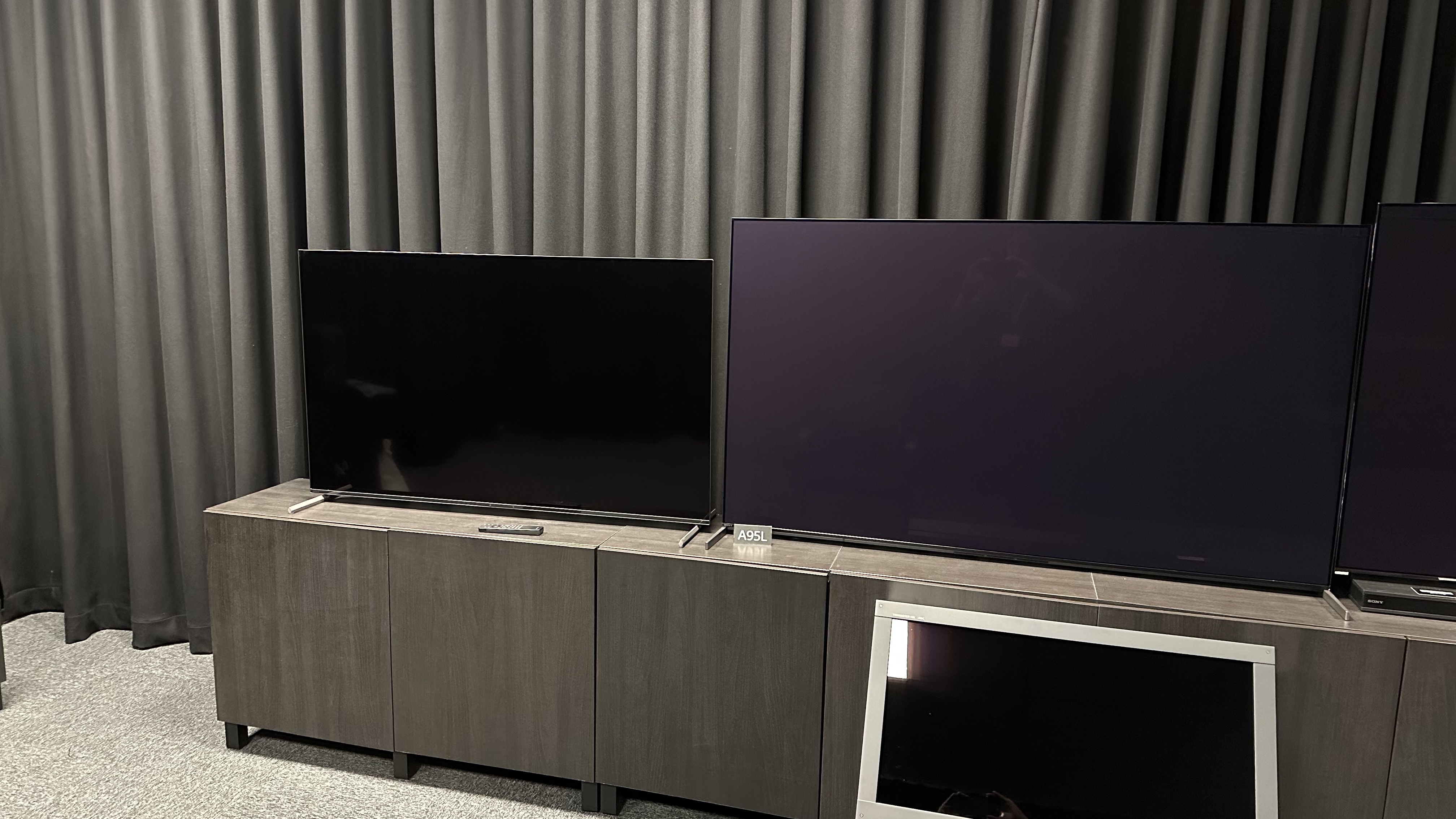
As is the norm for a modern, flagship OLED TV, the pure black bezel is super-thin and flush with the display area of the screen. Interestingly, the panel itself isn't pure black, but more of a dark grey that actually exaggerates the bezel, which would ordinarily blend in. We understand this is simply an element of the second-gen QD-OLED panel that the A95L uses, which is less reflective than the one that went before it. This extra anti-reflectivity is very welcome even in our light-controlled test room and should be hugely beneficial to those who use the A95L in a well-lit living room. For what it's worth, you only notice the slight greyness of the panel when the TV is off and the room lights are on.
Unlike many OLED TVs but in keeping with Sony’s designs, the A95L isn’t exactly gob-smackingly thin, but its extra thickness is largely down to it housing an advanced heatsink and an unusual, actuator-based sound system as well as all of the usual processing hardware and connections.
Sony also puts more effort than most into making the sides and rears of its sets interesting to look at, and the A95L continues that with its chequerboard pattern. Sony says it’s also increased its use of SORPLAS – a unique material made from primarily recycled plastics.
Features
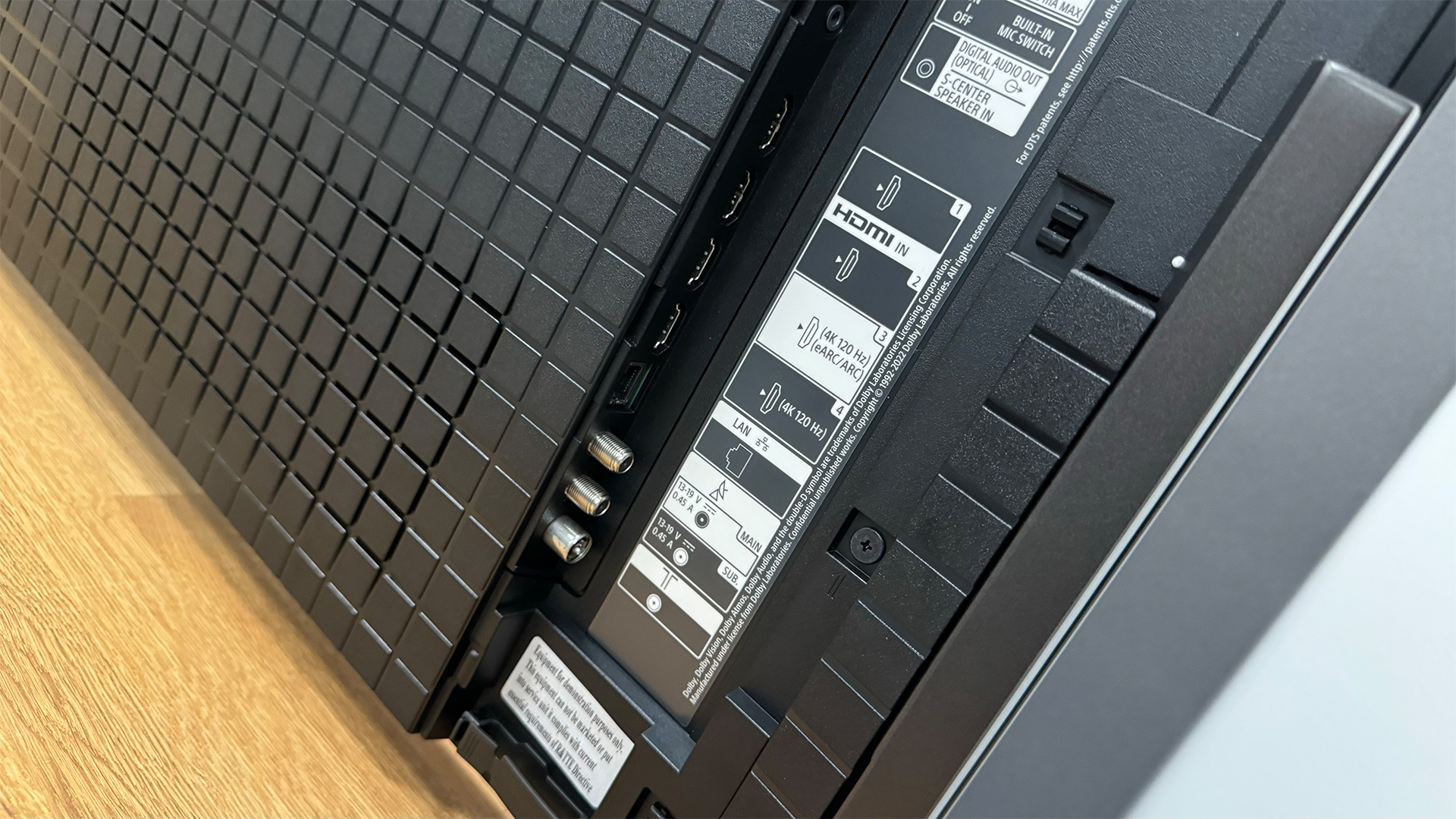
While impressive, the anti-reflectivity of the A95L's new QD-OLED panel (which is manufactured by Samsung Display and is the same panel that's in the Samsung S95C) certainly isn't its headline feature. That accolade has to go to the extra brightness it unlocks, which Sony claims makes the A95L capable of going twice as bright as the A95K it replaces.
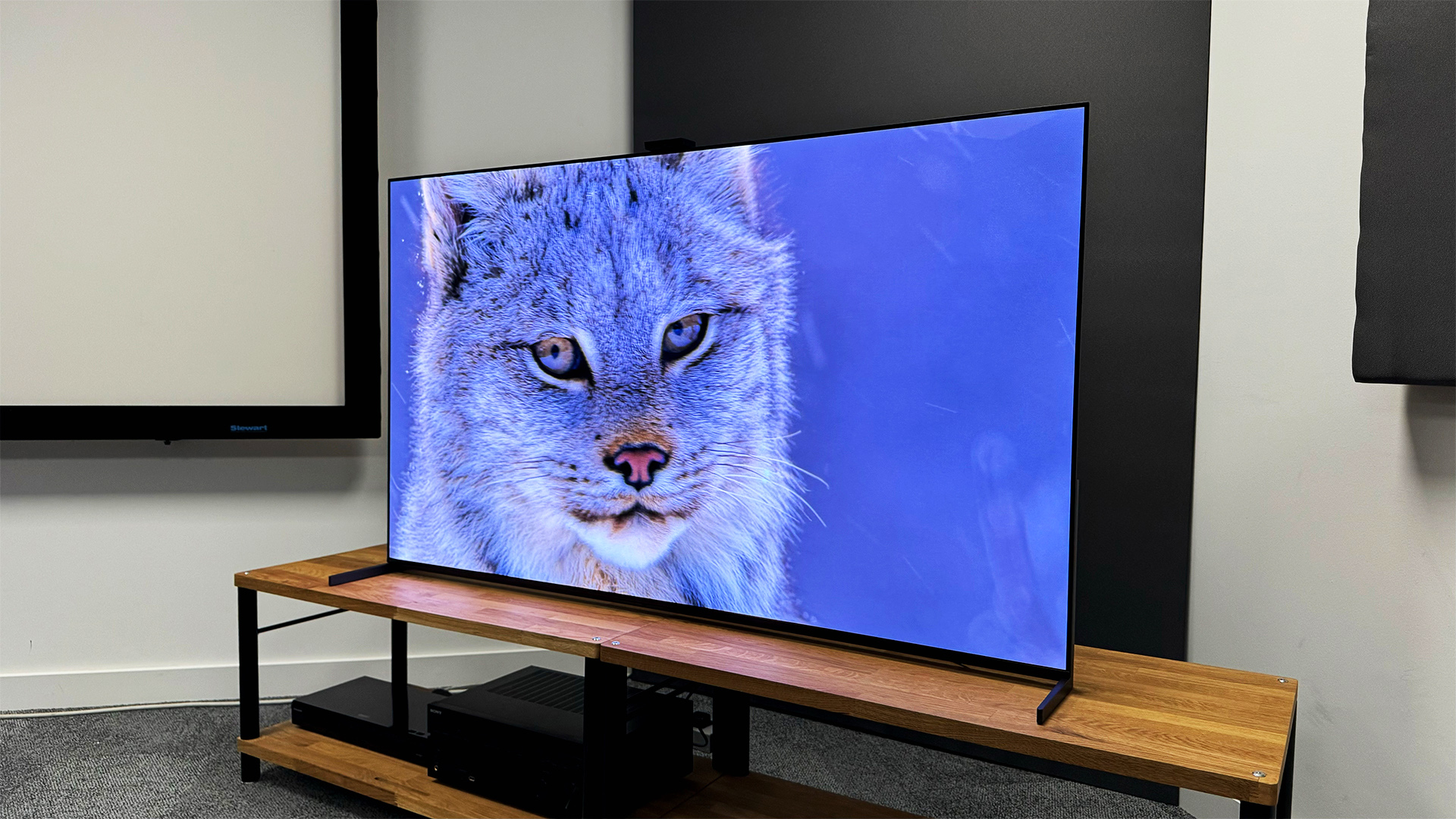
Screen size 65 inches (also available in 55in, 77in)
Type QD-OLED
Backlight N/A
Resolution 4K
HDR formats HLG, HDR10, Dolby Vision
Operating system Google TV
HDMI inputs x 4 (2 x 48Gbps HDMI 2.1)
Gaming features 4K/120Hz, VRR, ALLM
ARC/eARC eARC
Optical output? Yes
Dimensions (hwd, without stand) 83 x 144 x 3.4cm
Of course, performance is about more than the panel itself, and Sony says that to the QD-OLED panel it’s added its own heat diffusion sheet (also known as a heatsink) and bespoke thermal analysis via the set’s Cognitive Processor XR.
The Cognitive Processor XR is also responsible for Sony’s broader picture processing, which is arguably the best in the business. The key picture processing upgrade this year is XR Clear Image. Sony says this is an adaptive technology that cleans and clears up source material to optimise it for the TV’s 4K resolution.
What’s most interesting about this is that Sony claims the TV understands what the resolution of the source material really is, even if it’s being upscaled by a device (a Blu-ray player, for example) before being sent to the TV. It also, seemingly, can process 4K content, presumably because it apparently looks not only at the resolution of the signal but also at elements such as the encoding parameters and the bit rate. It can then apply Adaptive Noise Reduction and Adaptive Super Resolution as appropriate, and get rid of noise and/or blur.
There are upgrades on the gaming side, too, but they don’t go as far as some people will have hoped. For starters, the A95L still has just two HDMI 2.1 sockets and yes, one of those two sockets is also the eARC port, so if that is needed to connect a soundbar or AV receiver, you'll have just one top-spec HDMI socket left. That will be fine for most gamers (and non-gamers won't care at all), but it will be a source of major frustration to those who own both the PS5 and an Xbox Series X (and/or a gaming PC), particularly as the two standard HDMI ports lack VRR support as well as 120Hz capabilities.
Thankfully, the two HDMI 2.1 sockets do support 4K/120Hz, VRR and ALLM, and you no longer have to go through regular settings jiggery-pokery to find the correct HDMI setting for your source. And while Sony doesn't have a specific HGiG setting for more accurate HDR tone-mapping in games, you can turn HDR tone-mapping off in the TV's menus to achieve the same result.
On the subject of HDR in games, the A95L is the first Sony TV that will support Dolby Vision gaming. In fact, the A95L is the only model in Sony’s 2023 TV range that will do so. We understand that’s because it’s the only model that features the new MediaTek Pentonic 1000 HDMI chipset (Sony won’t confirm), but it has to be said that other manufacturers have been offering Dolby Vision gaming at up to 60Hz even on previous MediaTek chips. For what it’s worth, we understand that the A95L’s support of Dolby Vision gaming will stretch right up to 4K/120Hz.
Disappointingly, though, Dolby Vision gaming isn't yet supported by the A95L at all but will instead be added at a later date. Frankly, Sony doesn't have a great track record of delivering promised feature updates in a timely fashion, though it must be said that it does tend to at least deliver them eventually.
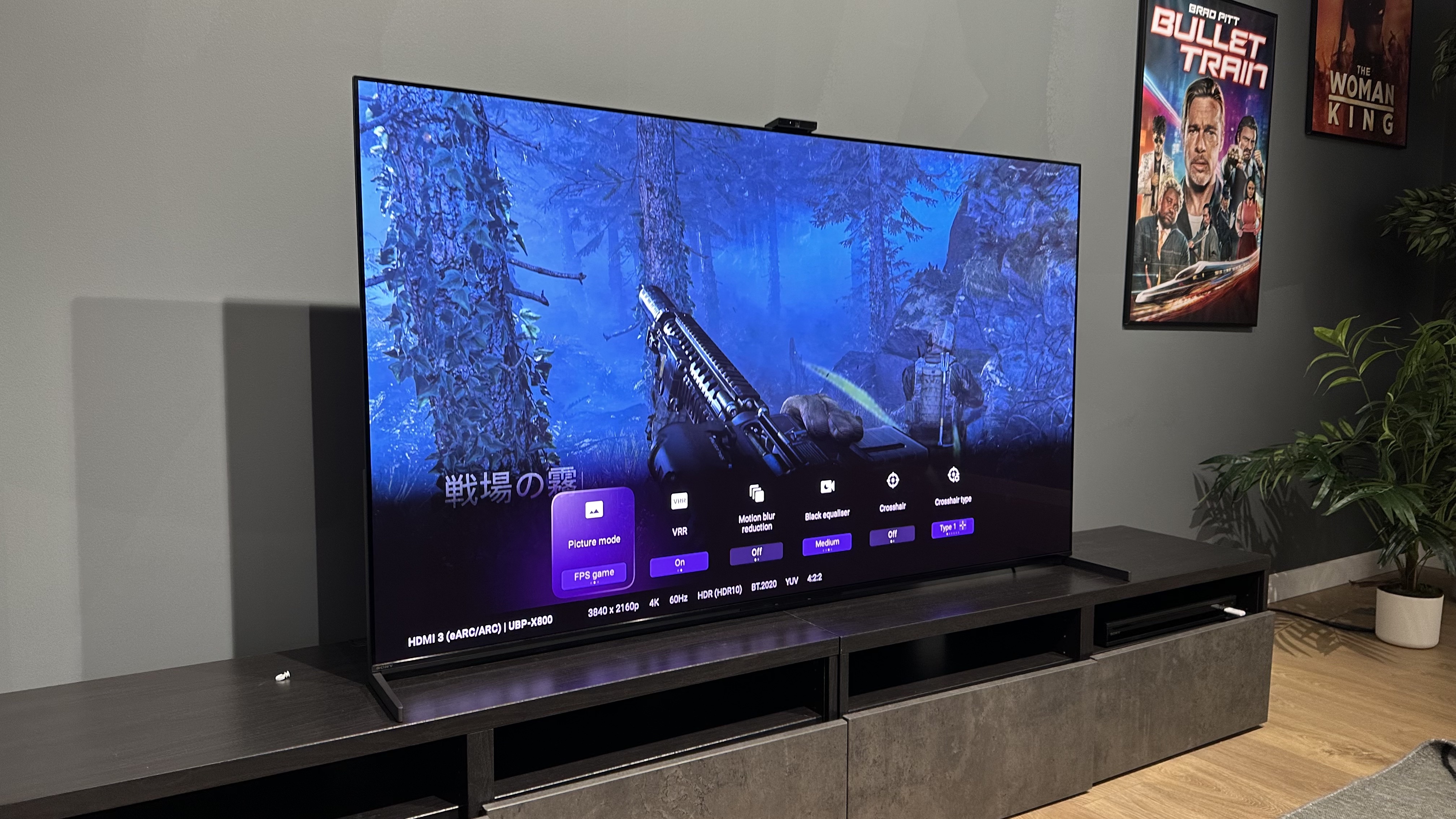
Sony has also finally joined its rivals in offering a dedicated game menu that we've already seen on 2023 models such as the A80L, and which gives quick and fairly stylish access to several game-specific features such as motion blur reduction and a black equaliser that’s designed to reveal more shadow detail. There’s also an option to add a bold crosshair to the centre of the screen, which seems to us even more like cheating than the black equaliser, but each to their own.
One unique feature of Sony’s game menu will be the option to reduce the image size so that your game essentially becomes a smaller window on the screen. Why would you want to do that? Competitive gamers often like to play on relatively small screens that require less eye movement so that action can be responded to more quickly. This feature would allow them to watch movies and TV shows in full screen, but reduce the size of the image for hardcore gaming. It will be possible to reduce the size of the window from 100 per cent right down to 30 per cent and anything in between. However, this is another feature that isn't yet available but will be added at a later date.
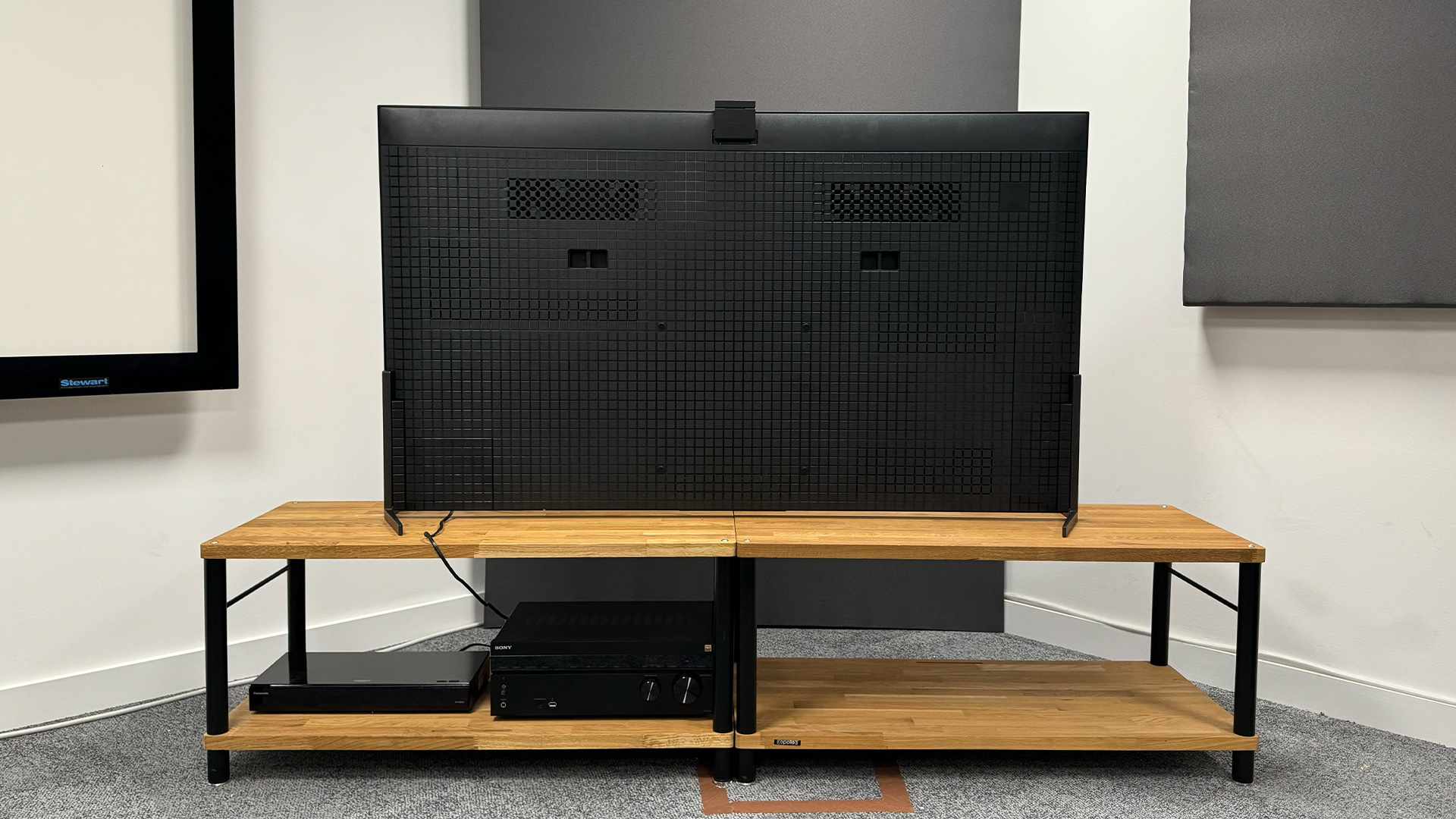
The A95L is also the only model in the new range that comes bundled with the Bravia CAM camera (it's an optional accessory for the other TVs in the range). This clips to the TV's top edge and unlocks a host of smart features, including video calling, automatic power saving and picture and sound optimisation based on the specific spot in the room that you're sitting in. During testing, we found little use for the Bravia CAM, but some of its features may be useful in a home environment.
As with last year’s models, Sony’s 2023 TVs run the Google TV operating system. Interestingly, though, Sony's own menu system, which sits alongside Google TV and handles elements such as picture and sound settings, has had a revamp for the A95L. Essentially, this consists of new, very stylish graphics being added to the various pop-up menus, as well as improved descriptions of each menu and feature. This doesn't sound like much, but it makes the set look and feel much fancier and more modern.
On the downside, while the A95L felt very slick and fluid during our hands-on session in August, we've found it to be a little sluggish at times during our full review. It feels particularly ponderous on start-up, which we suspect is a Google TV issue, but Sony's own menus aren't as smooth as they might be, either, particularly when streaming via an app such as Netflix. It's not a big deal, but there's a bit of judder to elements such as the Quick Menu and on-screen keyboard that you don't get from LG's top TVs, for instance.
On the subject of streaming apps, the A95L is a bit of a mixed bag, at least in the UK. The big, global apps such as Netflix, Amazon Prime Video, Apple TV and Disney+ are all present and correct (although Disney+ is delivered in 5.1 rather than Dolby Atmos), as are Now and Discovery+ (the new home of TNT Sports, previously BT Sport), and GeForce Now and PS Remote Play provide options for console-less gaming. But none of the UK's terrestrial channel catch-up apps are on board, which is a particularly egregious omission in the case of BBC iPlayer. You can of course add these fairly inexpensively through the addition of a streaming device such as the Chromecast with Google TV, but you really shouldn't have to.
Picture
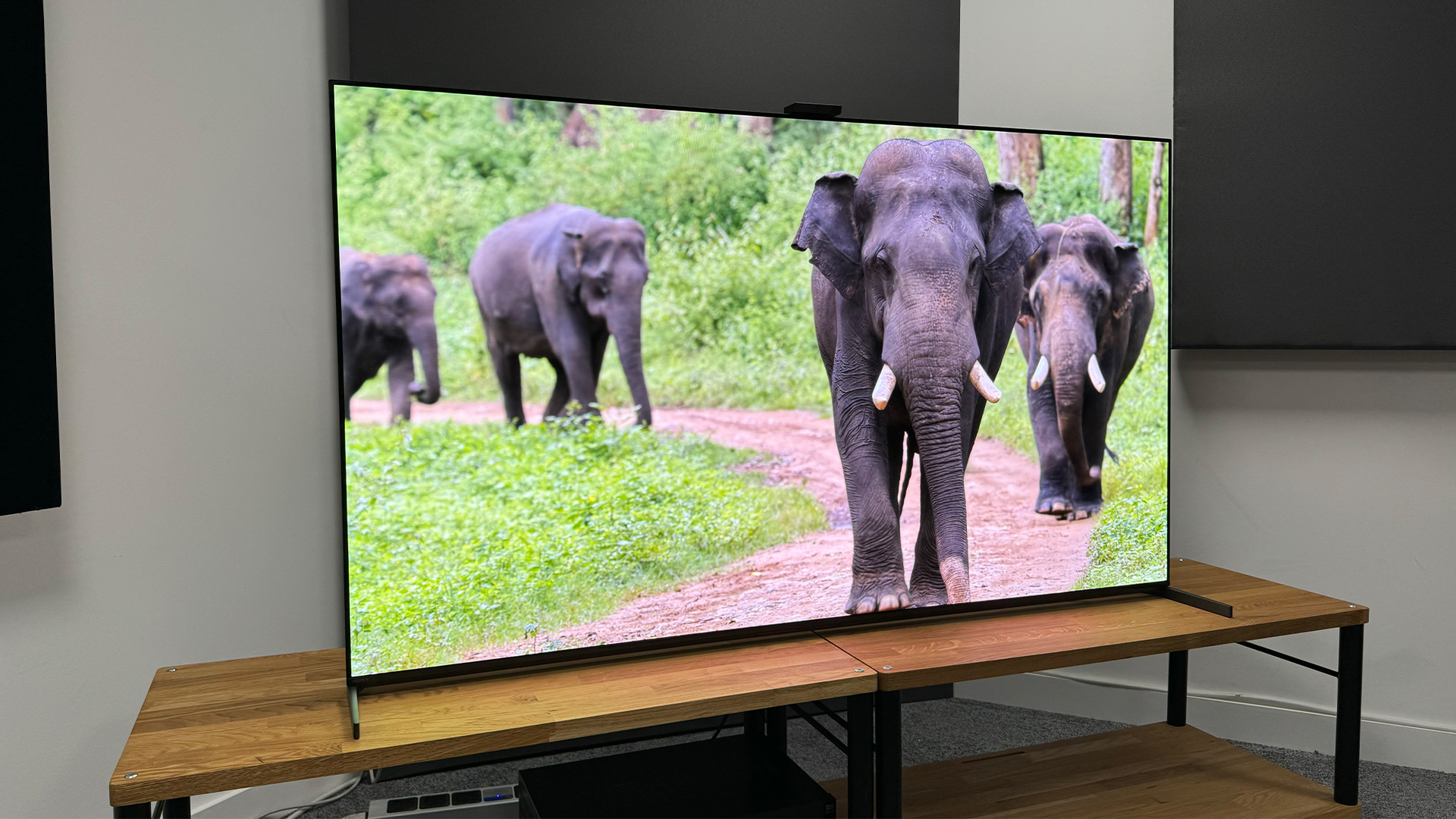
During our extended hands-on session in August, we were able to compare the A95L with its A80L mid-range stablemate, the LG G3, Samsung S95C and, most excitingly, Sony's BVM-HX310 mastering monitor. Over the last week, we've spent more time comparing it with the A80L and added the Panasonic MZ2000 into the mix, a separate review of which is coming soon. In short, we've put the Sony A95L up against pretty much every other TV you might be considering and it is, with very little doubt, the best of the lot.
We kick off our full review with the 4K Blu-ray of Pan, not because it's a fantastic movie (it most certainly isn't) but because it's one of the brightest movies currently available and so is perfectly placed to help us explore the potential benefits of the A95L's second-generation QD-OLED panel.
Well, there's no longer anything 'potential' about the benefits: the A95L's additional brightness and colour vibrancy over the A80L and even the MLA-boosted Panasonic MZ2000 are immediately clear in the first scene's streetlamps and headlights, which are reproduced with a more intense and accurate yellow glow. The moon over London, meanwhile, is not only brighter on the A95L, but it also has some subtle pink shading and lots of texture detail that is missed by rivals. This is precisely the sort of picture element that QD-OLED is designed to excel at.
There's no loss of black depth, though, with the grimy streets of Victorian London being both oppressively dark and packed with shadow detail. What's more, the A95L also reproduces colours expertly in these darkest parts of the picture so that skin tones remain accurate and lifelike where other TVs allow them to go a bit pale.
The extra contrast afforded by the brighter highlights helps to reinforce edges and textures, giving everything an even more solid and three-dimensional appearance, yet this is also masterfully combined with an even greater degree of subtlety. The lights shining on a tiled wall reveal all sorts of subtle shades on the A95L, and as Peter peers into a bottle in Mother Barnabus's office, the little ship inside is resolved with fabulous fine detail and excellent solidity.
The test-favourite 'flight to Neverland' scene is even more of a visual treat. The bright sunlight gleams off the clouds and the white caps of the waves in a way that makes the ordinarily impactful A80L look a little dull and flat, and there’s more detail and warmth to those highlights. The A80L does a really good job with the sun by the standards of a WOLED, but it looks undeniably pale and washed-out next to the orangey recreation of the A95L.
The Panasonic MZ2000, meanwhile, while almost (but not quite) a match for the A95L in terms of brightness, also struggles to recreate those bright colours in the way that its Sony rival does. The A95L has the edge in terms of solidity and three-dimensionality, too, and combined, these qualities make scenes such as this look incredible, with the sun shining through the sails in glorious fashion, the Neverland landscape below crisply drawn and appearing to go on forever, and the sun itself super-bright and lusciously orange. The MZ2000 does reveal that in some small, very bright areas the A95L loses just a little detail – the clouds in front of the setting sun, for example – but otherwise the A95L is little short of astounding.
What's perhaps most impressive is the way that the A95L achieves all of its pop and dynamism without eroding subtlety or authenticity in the way that Samsung's S95C QD-OLED is occasionally guilty of. Switching to Top Gun: Maverick and the scene in which everyone's favourite ageing pilot meets John Hamm's Admiral 'Cyclone' for the first time, the A95L reproduces the stark contrast of the light pouring in from one side of the room with the shadow on the other side rendered just as effectively as its Samsung rival, but it marries that to subtle shading across Hamm's face and more authentic colour reproduction.
Even Blade Runner 2049, which is mastered well within the brightness of even a standard OLED TV, the Sony A95L puts in a superior performance. It's just as supremely detailed and sharp as its A80L sibling, and it has equally brilliant motion handling, but its colour reproduction is once again a cut above, with the consistency of its skin tones through all lighting conditions proving particularly pleasing during the scene in Sapper Morton's farm.
We find this to also be the case with Fast X in Dolby Vision. While the Dolby Vision Dark preset is rather dull on the A80L, it’s fantastic on the A95L – punchy, bright, insightful, crisp and richly coloured in all lighting. Again, it’s particularly impressive how good colours are in shadowy areas: Brie Larson and Alan Ritchson both look rather pale in the scene in the briefing room via many OLEDs, but the A95L reveals her blush makeup and his ridiculous sun tan in all their glory.
While 4K HDR movies (the brighter the better!) are where the A95L's advantages are most apparent, it's certainly no slouch with lesser content. Playing True Grit in 1080p, it’s once again the colours that are most impressive. There’s a good deal more richness to the A95L’s delivery that’s visible across the whole image but is most appreciable in skin tones, which have a more authentic complexion, from the main character’s youthful rosiness to the horse salesman's alcoholic ruddiness.
The upscaling is no better from the A95L than the A80L but that's absolutely fine because both TVs are exemplary in this regard, with bags of detail, sharp but unexaggerated edges, and just the right amount of film grain. Contrast is brilliant by SDR standards, too, with deep but insightful blacks and bright highlights that stand out without looking forced.
Sound
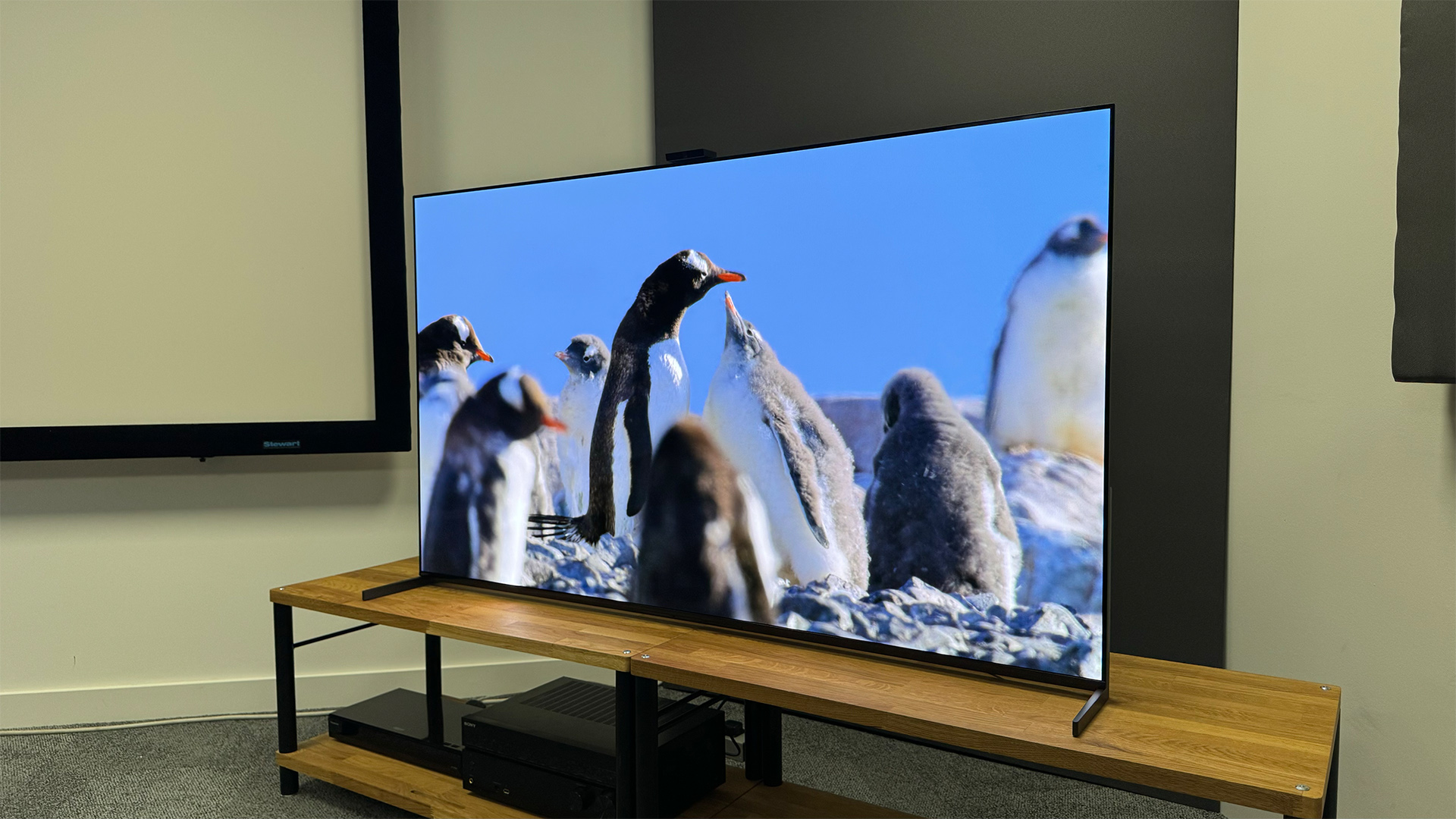
The A95L uses a very slightly tweaked version of the 2.2-channel actuator-based sound system of the A95K. Two actuators vibrate the whole screen in order to make sound, backed up by two regular woofers that add bass. The goal of the actuator-based system is to ensure that the sound and picture are spatially connected, and it’s an approach that’s worked well for Sony for years now.
The Acoustic Calibration that you're encouraged to perform when you first set the TV up might seem disarmingly quick (it takes no more than a few seconds), but it does open out the sound a bit, making it more spacious and delivering a better pseudo-surround effect.
The degree to which the A95L can fill the space above and around its physical dimensions is well illustrated by the scene on the balcony of K’s building in Blade Runner 2049. The entire side of the room in which the TV is placed fills with rain. Not in a vague or hazy way, either, but with the sort of crisp definition that makes you feel as if you can hear individual raindrops.
The atmospheric nature of the delivery really draws you into a scene, but it's the directness of the actuator-powered sound that ensures you remain engaged. Dialogue is focused and well-projected, and there's plenty of detail and dynamic nuance to voices.
It's fair to say that the A95L doesn't go as deep as some rivals, but its bass is well-defined and textured, and the set doesn't get flustered by the super-low frequencies of Blade Runner 2049's soundtrack even at the very high volumes of which the TV is capable.
All told, this is one of the best-sounding TVs you can buy, and one of few that wouldn't easily be bettered by a budget soundbar. That isn't to say that you shouldn't combine the TV with a soundbar or (even better) an AV receiver, but you're looking at a model such as the Sonos Arc or Sony HT-A7000 to get a significantly better sound. We rather wish Sony gave you the option to add a subwoofer directly to the A95L, as that would make it even more formidable.
Verdict
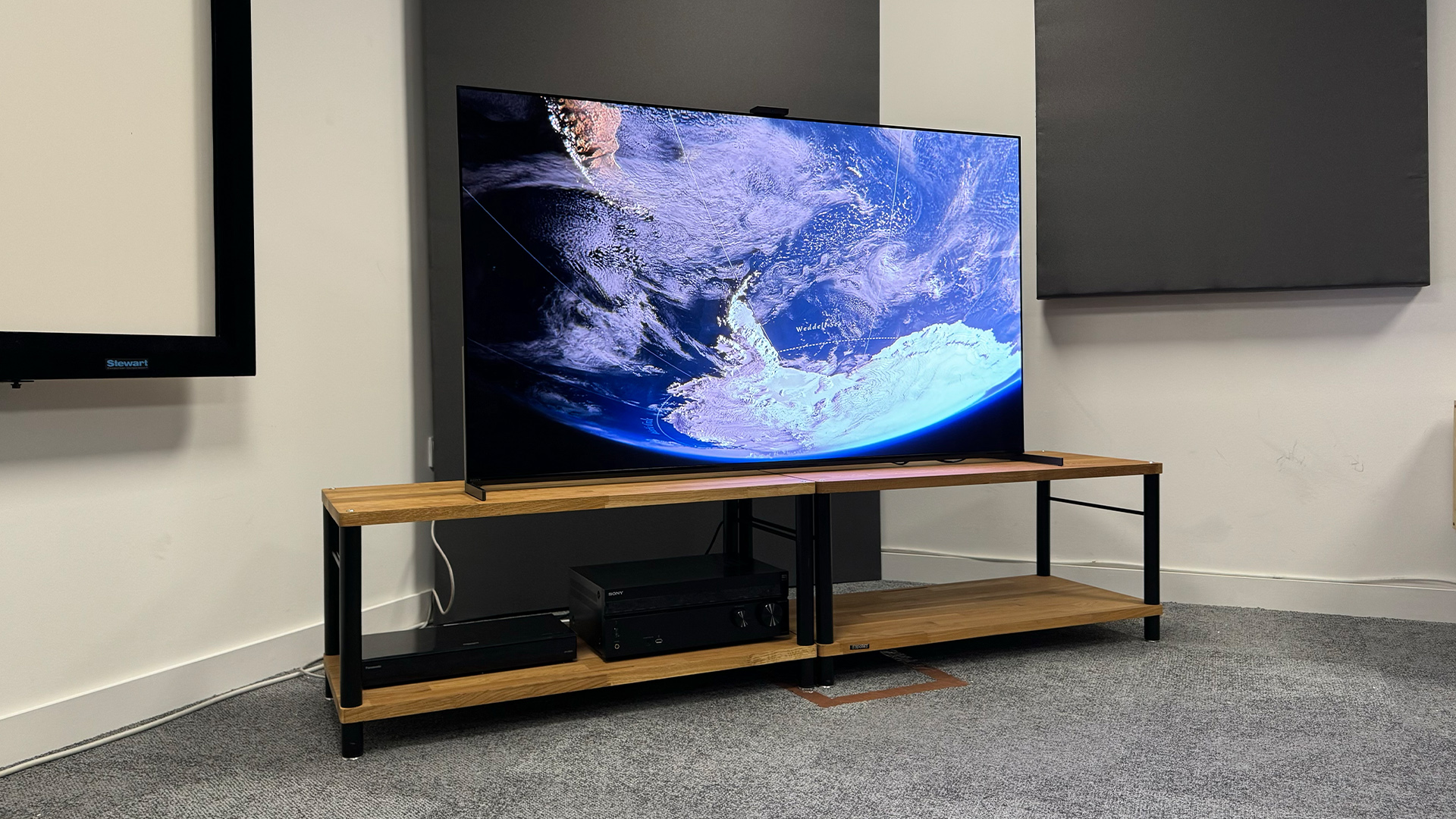
Be in no doubt; the Sony A95L is a stunning TV. Not only is it capable of going astonishingly bright and producing incredibly vibrant colours, but it also uses those abilities to recreate movies and TV shows more accurately than the TVs with which it is competing. On top of all of that, it's one of the best-sounding TVs you can buy – although we firmly believe that picture quality this good should be partnered by the sort of sound that only an AV amplifier and Atmos speaker system can provide.
Hardcore gamers with big budgets will still be drawn to the LG G3, but unless you absolutely must have more than two HDMI 2.1 sockets, the A95L is the better buy – though an admittedly very expensive one.
SCORES
- Picture 5
- Sound 5
- Features 4
MORE:
The TVs to beat: check out our LG G3 review and Samsung S95C review
And here's our review of the step-down Sony A80L OLED
These are the best TVs you can buy right now
Tom Parsons has been writing about TV, AV and hi-fi products (not to mention plenty of other 'gadgets' and even cars) for over 15 years. He began his career as What Hi-Fi?'s Staff Writer and is now the TV and AV Editor. In between, he worked as Reviews Editor and then Deputy Editor at Stuff, and over the years has had his work featured in publications such as T3, The Telegraph and Louder. He's also appeared on BBC News, BBC World Service, BBC Radio 4 and Sky Swipe. In his spare time Tom is a runner and gamer.
- Alastair StevensonEditor in Chief
-
Babur72 Hi folks,Reply
Been thinking about upgrading my old SONY 4K UHD TV for the 65in A95L OLED or similarly sized X95L Mini LED to partner my existing SONY HT-A7000 soundbar, SA-RS5 rear surrounds & SA-SW5 sub.
If I’d be predominantly using this TV for viewing action movies, sports & for PS-5 gaming normally in quite a bright room, which of these 2 TV’s would you recommend?
Much obliged.
Best regards. -
giggsy1977 If you want the best picture quality the OLED is the way to go.Reply
However, I personally wouldn't hook up a games console to what is a very expensive screen. -
Babur72 Reply
Read in a number of articles or reviews that Mini LED would suit SD & HD sports broadcasts best(?)giggsy1977 said:If you want the best picture quality the OLED is the way to go.
However, I personally wouldn't hook up a games console to what is a very expensive screen.
BTB. Amazed to see that you’re still getting satisfaction from your Pioneer Kuro screen(?) Much enjoyment viewing content on my Kuro til around 7 years back, when it started playing up. -
giggsy1977 Might be that the inherent flaws of LCD technology (trails with movement) are more forgiving than OLED movement. Depends how sensitive someone is to the different display types and their handling of motion, and also what one is used to watching. Having watched both I prefer OLED, but will happily watch most things on either.Reply
The Kuro is great. Had to tweak the numbers on the service menu to get rid of the red tint to blacks which was a known issue by many, but in doing so, the blacks are inky black and it's the best HD pic I have seen from a 1080p panel (aside from the KRP-500M they produced). Great detail, natural colours and good motion! -
Fraz60 I am astonished that the review makes no comment about how this Sony OLED performs when watching sport. Football and rugby with the static on screen score has been the scourge of OLEDs. I got rid of the Sony A1 after they bricked it with an update that caused ridiculous dimming and ruined my enjoyment of the game. That was 5 years ago but from what I’ve read widely, things haven’t changed or have they? How does this model perform in this regard?Reply

